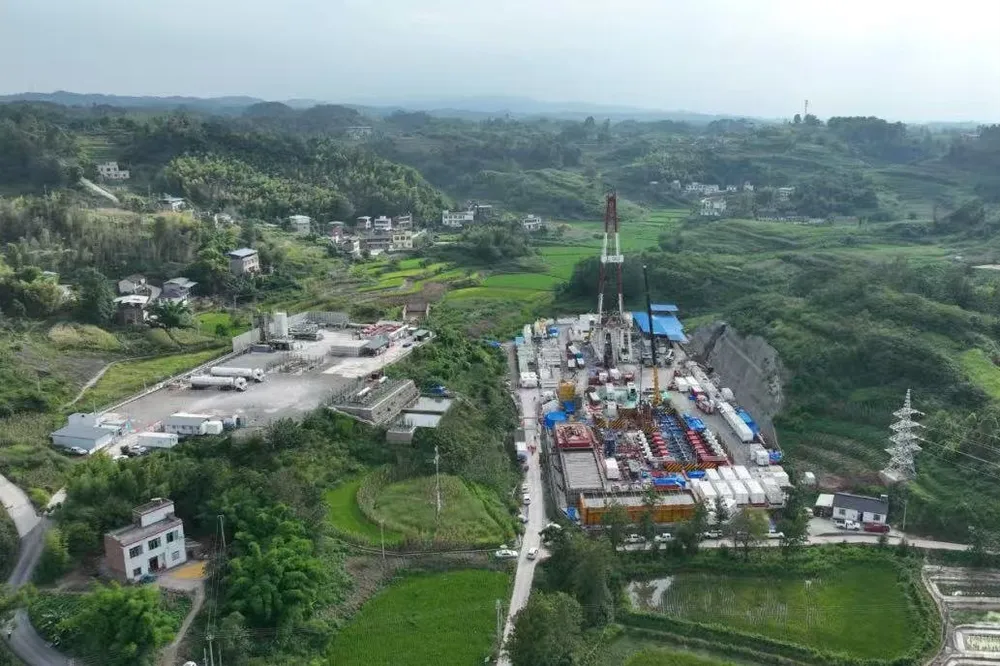China has made a significant discovery of deep shale gas reserves in two southwestern fields, each with over 100 billion cubic meters of certified reserves, according to the China Petroleum & Chemical Corporation (Sinopec). This is considered a crucial step in the country’s efforts to ensure national energy security.
Specifically, the Chinese government has certified 165 billion cubic meters of natural gas in the Hongxing field, spanning from Hubei Province to Chongqing City. Sinopec emphasized that this discovery “confirms the strong resource potential of the Hongxing area and makes a strategic contribution to national energy security.”
A week earlier, the country’s Ministry of Natural Resources approved 124.6 billion cubic meters of shale gas in the Yongchuan field in the Sichuan Basin. The field was discovered in 2016 and had 23.5 billion cubic meters certified in 2019.
Both new gas fields lie more than 3.3 kilometers deep underground, with complex geological structures, making exploration and exploitation challenging. Sinopec is studying and developing technologies to address these technical difficulties.
For over a decade, Sinopec has been actively exploring the Sichuan Basin, a deep oil and gas-rich region. Thus far, the corporation has discovered five large shale gas fields, including the Fuling field with 1,000 billion cubic meters of reserves and four other fields with over 100 billion cubic meters each at Weirong, Qijiang, Yongchuan, and Hongxing.
Increasing domestic energy production is a top priority for China to reduce its reliance on oil and gas imports. In the 14th Five-Year Plan (2021-2025), Beijing aims to expand domestic oil and gas supplies, focusing on non-traditional sources such as shale oil and gas and deep coalbed gas.
The government has also extended the Clean Energy Fund, implemented in 2020, to 2029, to encourage shale gas and coalbed gas development projects.

In 2024, China produced 246.4 billion cubic meters of natural gas, including 25.7 billion cubic meters of shale gas, according to Sinopec. Currently, China is one of the four countries in the world, along with the US, Canada, and Argentina, producing shale gas on a commercial scale, as per the US Energy Information Administration (EIA).
China’s energy strategy requires a careful balance between immediate energy security needs and long-term climate goals. Natural gas, including shale gas, plays a pivotal role as a “bridge fuel” in this energy transition.
Compared to coal, natural gas emits only about half the amount of carbon dioxide when burned for electricity generation. This significant emissions difference makes gas an attractive alternative for a country still heavily reliant on coal-fired power plants.
Integration with renewable energy development creates important synergies. Natural gas power plants can ramp up or down relatively quickly, making them a valuable complement to intermittent renewable sources like wind and solar.
In China’s long-term energy mix, shale gas occupies an important intermediary position—cleaner than coal but still a fossil fuel, and ultimately needing to be phased down as carbon-free alternatives develop. This positions shale gas as a transitional resource rather than a long-term solution.
Inauguration of the 1,500 Billion VND Hai Anh Wind Power Plant
The Hai Anh Wind Power Plant project is a landmark initiative, proudly standing in the communes of Huong Phung and Lao Bao in Quang Tri Province. This ambitious undertaking represents a Group B energy project, ranked as a second-tier venture with an impressive 40 MW capacity. With a substantial investment of 1,500 billion VND, this onshore wind farm is a pioneering effort, being the first of its kind to partake in the Joint Crediting Mechanism (JCM) – a testament to the strong collaboration between the governments of Vietnam and Japan.








































